Lessons from Silicon Valley Bank
Thanks to a subscriber for this memo from Howard Marks which may be of interest. Here is a section:
Total U.S. bank assets exceed $23 trillion. Banks collectively are the biggest real estate lenders, and while we only have rough ranges for the data, they’re estimated to hold about 40% of the $4.5 trillion of CRE mortgages outstanding, or around $1.8 trillion at face value. Based on these estimates, CRE loans represent approximately 8-9% of the average bank’s assets, a percentage that is significant but not overwhelming. (Total exposure to CRE may be higher, however, as any investments in commercial mortgage-backed securities have to be considered in addition to banks’ holdings of direct CRE loans.)
However, CRE loans aren’t spread evenly among banks: Some banks concentrate on parts of the country where real estate markets were “hotter” and thus could see bigger percentage declines; some loaned against lower-quality properties, which is where the biggest problems are likely to show up; some provided mortgages at higher loan-to-value ratios; and some have a higher percentage of their assets in CRE loans. To this latter point, a recent report from Bank of America indicates that average CRE loan exposure is just 4.5% of total assets at banks with more than $250 billion of assets, while it’s 11.4% at banks with less than $250 billion of assets.
Since banks are so highly levered, with collective equity capital of just $2.2 trillion (roughly 9% of total assets), the estimated amount the average bank has in CRE loans is equal to approximately 100% of its capital. Thus, losses on CRE mortgages in the average loan book could wipe out an equivalent percentage of the average bank’s capital, leaving the bank undercapitalized. As the BofA report notes, the average large bank has 50% of its risk-based capital in CRE loans, while for smaller banks that figure is 167%.
The exposure of smaller banks to both the rise in long-dated yields and the looming restructuring of commercial property leases raises important questions for depositors. The most pressing is why take the risk?
Balances in money market funds continue to trend higher and currently sit at $5.27 trillion. That’s around $750 billion than this time last year. The only way to stop depositor flight will be to offer higher interest rates, which obviously tightens margins and restricts credit.
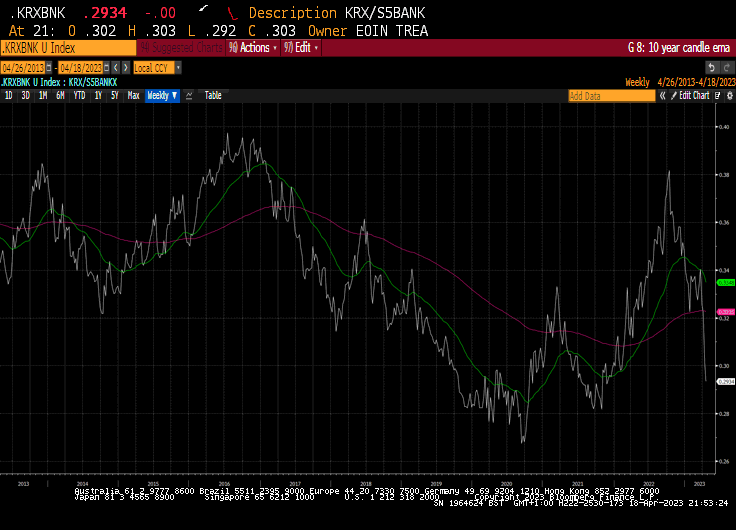
The divergence between the performance of the regional banks and the S&P500 banks suggests investors are unconvinced by the recovery prospects of the regionals this side of a recession.
This article from Bloomberg highlights the uptick in demand for private credit and may be of interest. It makes sense that those with cash to invest will see opportunities open up as credit conditions tighten.
It also suggests the private credit markets will be among the biggest beneficiaries of tighter financial regulation since they are not deposit takers. There is likely to be a clear divergence between new money coming from now on, and those which are holding assets that are in the process of taking a haircut.
Brookfield defaulted on another portfolio of office buildings today, this time focused around Washington D.C. The company had this to say as they try to put the event in context.
“We have always focused on quality, so 95% of what we own are trophy and Class A buildings that continue to see strong demand globally and benefit from the flight to quality,” Brookfield spokesperson Kerrie McHugh said in an emailed statement. “While the pandemic has posed challenges to traditional office in some parts of the US market, this represents a very small percentage of our portfolio.”
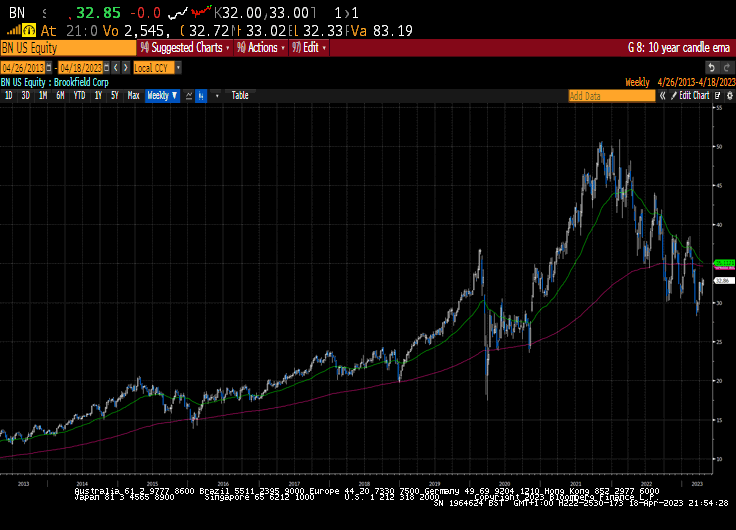 The share failed to sustain the break below $30 in March and continues to unwind the short-term oversold condition. It will need to sustain a move above $35 to break the medium-term downtrend.
The share failed to sustain the break below $30 in March and continues to unwind the short-term oversold condition. It will need to sustain a move above $35 to break the medium-term downtrend.
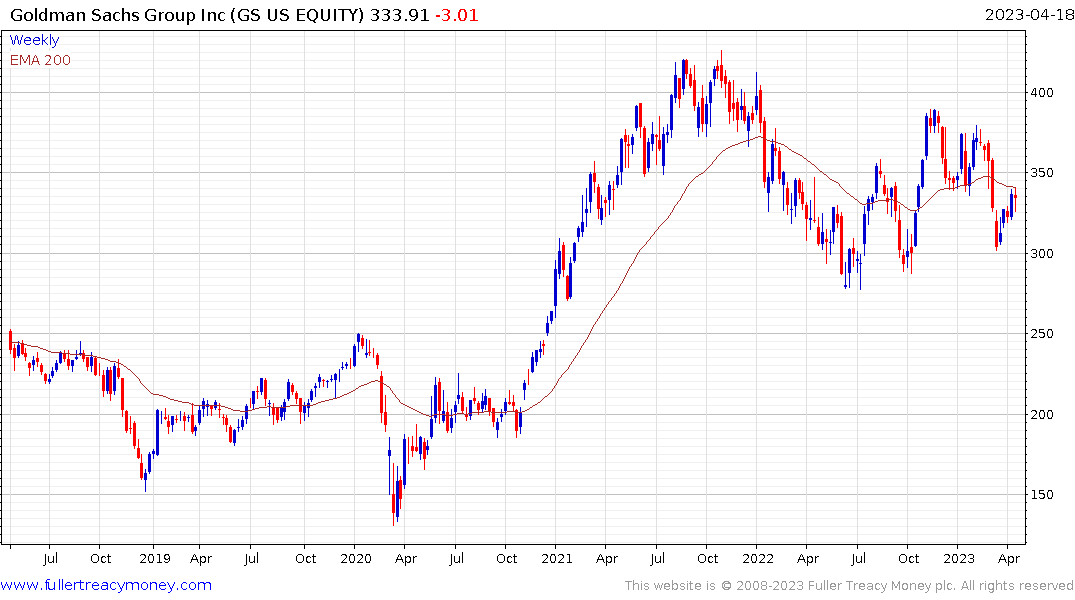
Goldman Sachs, which also bet big on private lending over the last decade, is barely steady as it holds above the 1000-day MA.
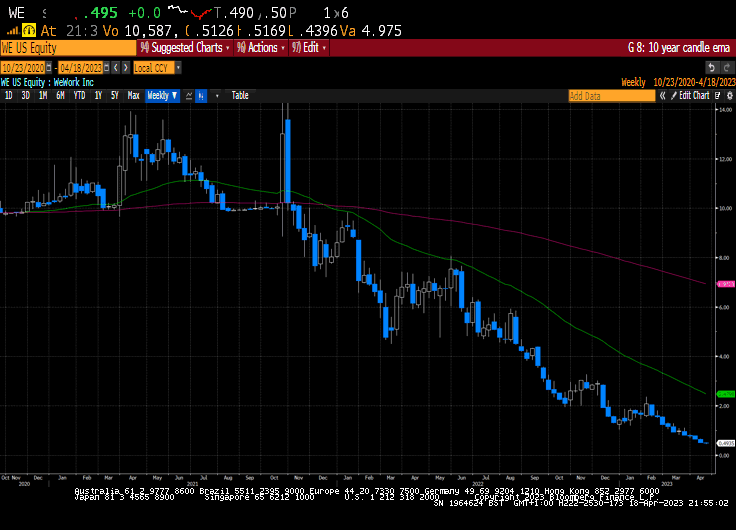 WeWork is desperately attempting to renegotiate leases but may ultimately fail to avoid default on almost $20 billion in debt.
WeWork is desperately attempting to renegotiate leases but may ultimately fail to avoid default on almost $20 billion in debt.
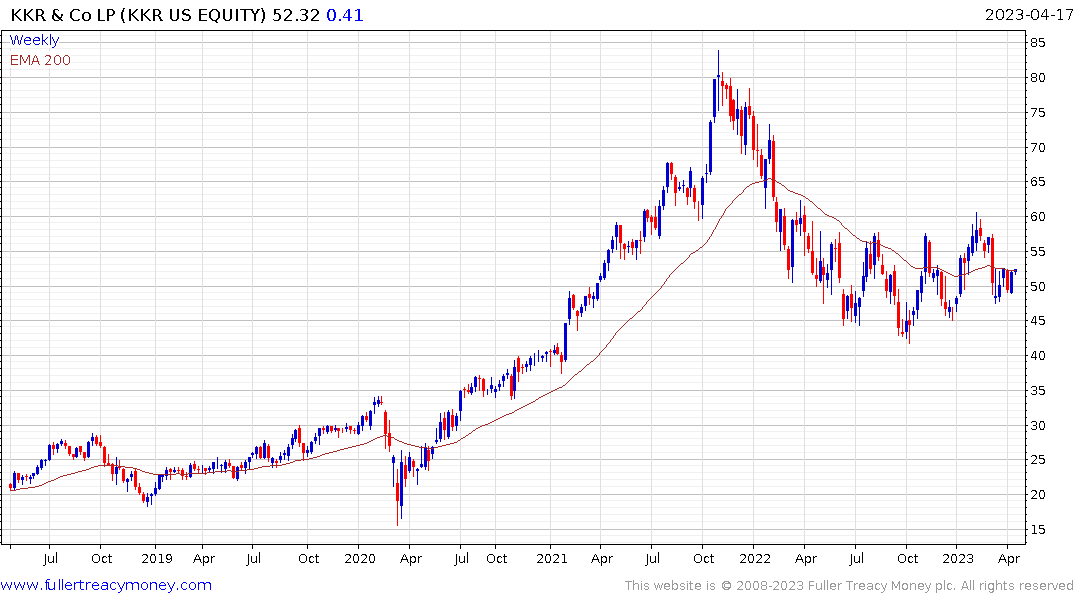 Among the major private equity companies KKR has among the most convincing base formation characteristics.
Among the major private equity companies KKR has among the most convincing base formation characteristics.


